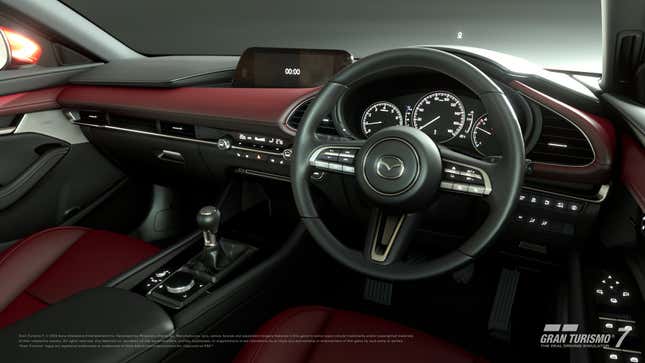Another Legendary Record-Setting '90s Supercar Is Coming to Gran Turismo 7

After February’s Gran Turismo 7 update brought Honda’s first Grand Prix-winner and the return of Grand Valley, and last month’s patch added five cars including the Porsche 959 and Toyota Alphard, April’s slate of new content has finally been teased. And while it looks to be a bit smaller on the surface compared to the last two, we already know that one of the inclusions is a big deal.
Racing Tech | How Formula E’s New Front Powertrain Extends Battery Life on its Race Cars
In case you missed it:
Alongside the Mercedes-AMG GT3 Evo and Toyota- and Honda-powered variants of the latest spec chassis in Japan’s Super Formula open-wheel series, the update slated for this coming Thursday will bring the Jaguar XJ220 to Gran Turismo for the first time since GT6. Considering GT7 already has the Ferrari F40 and McLaren F1 and just got the aforementioned 959, the XJ220 is another member of the late-20th century record-setting supercar family to join the party. Here’s hoping the Bugatti EB110 SS and Ruf CTR “Yellow Bird” aren’t terribly far behind.
The XJ220 is no stranger to video games of course; it even had its own Sega CD and Amiga title made by the same folks who gave us Tomb Raider. But it’s a little different when Polyphony Digital immortalizes a particular car in Gran Turismo. The studio’s artists have a way of capturing the idiosyncrasies of every vehicle with unmatched detail, from the nuances of their interior lighting to their particular exhaust notes.

Just like in real life, the Mazda3’s cabin is a delightful place to be in GT7.Image: Sony Interactive Entertainment
The level of effort is clearly painstaking, which is why short of happening upon an XJ220 at a concours event, there’s probably no better way to get up close and personal with cars like it than surveying them in GT7. That’s doubly true if you happen to own a PlayStation VR2 headset.
Despite a top speed of 213 mph — a production car record for 1992 — the XJ220 has never quite kept the following of its peers. The F1 was of course billed as engineering perfection in every respect, and time has only bolstered that reputation. The 959 was a spaceship on wheels as far as anyone in the ’80s was concerned, with Porsche aiming to craft the most capable performance car on any terrain through technology. By contrast, the F40 was unrefined and gave no apologies for that.
The XJ220, however, didn’t really have a lane of its own. It could have perhaps, if Jaguar was able to maintain the concept version’s V12 and all-wheel-drive. Yet those attributes actually ran counterintuitive to the target 220 mph, which the slippery bullet never reached.
I look forward to getting more familiar with the XJ220 behind the wheel in GT7. The update will go live overnight Thursday, and when it does, it’s likely there will also be new race events, Extra Café Menu Books and engine swaps thrown in for good measure.







